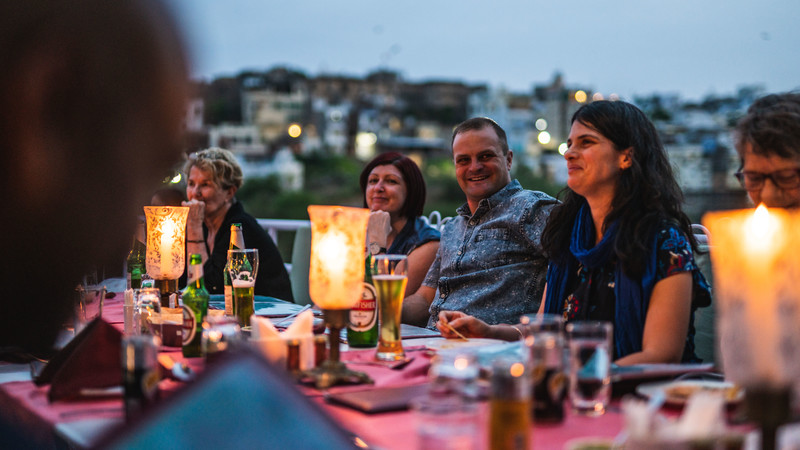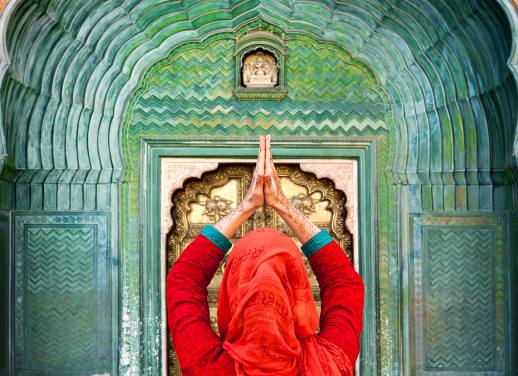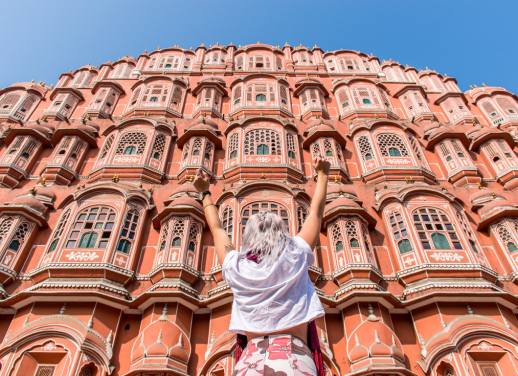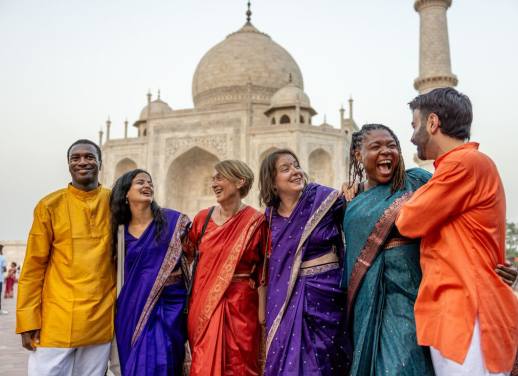It is impossible not to be astonished by India. I believe it is one of the most incredible countries that the sun visits on its rounds; thrilling, stirring, inspiring.
Whenever I sit down to write about India I am filled with gratitude for the knowledge I gained from my travels there. When feeling overwhelmed by the daily grind, I fondly recall India’s golden rule, taught to me by Varsha, my local Intrepid guide: “Just do the opposite of what would be normal anywhere else in the world”. And now, I want to share four life lessons I learned from my time in India.
1. A digital detox helps you really live
My first and favourite lesson. Before my trip, my iPhone seemed attached to my hand, but India has somehow managed to soften the glue. I’ve always found peak hour trains in my hometown of Melbourne a bit depressing. Hundreds of pairs of eyes fixated on screens and carriages of headphoned people disconnected from their immediate environment. By comparison, my first long train ride in India jolted me. It’s funny to remember being the only one in my carriage with my phone out. What was considered normal back home had me feeling out of place and rude in India where people chatted to their neighbour, shared snacks, played card games or just gazed out the window at passing landscapes. I learned to keep my phone in my bag when dining at restaurants because locals were bound to want a chat and I roamed the streets without my headphones in. I was surprised by how many social interactions putting my phone down opened me up too.
DISCOVER THE MAGIC OF INDIA FOR YOURSELF, UNDER THE GUIDANCE OF AN INTREPID LOCAL LEADER
My months in India have killed my instinct to reach for my device first thing in the morning and scroll through it whenever I am feeling ‘bored’. I think in Western culture we have incorrectly associated a lack of constant stimulation with boredom. India taught me sitting in silence, without Spotify blasting in my ears can be both peaceful and energizing. These days I may be one of few on Melbourne trains without a phone visible but I’m entertained by people-watching and all the stations on my line, plus I haven’t exceeded my data limit once.
2. The value of community
“Do you know the names and birthdates of your neighbours?”
This was a question an Uber driver asked me as we drove to Delhi’s Red Fort. It hit home because I didn’t. I had lived in the same apartment block for a year and couldn’t tell him a single detail about the people who lived metres from my doorstep. Encounters like this made me reflect on the value of community. In India there are temples that always have food to feed the hungry, children are the responsibility not of parents, but villages and you are actively encouraged to stop strangers at random for a quick chat. In Jodhpur, I was rescued from a pack of angry dogs by an elderly woman and offered shelter in peoples homes or street stalls during monsoon rains in Dharamkot. I’m aware that Western city life will never have the same sense of community as small Indian villages, but since returning home, I can proudly say that my neighbour Connor was born on the 6th of June and my favourite barista has a daughter named Ella.
3. To view health from a holistic point of view
I have never felt healthier than during my time spent in this country. The fresh produce and focus on restorative practices of yoga and meditation nurtured my mind and body. In India, you won’t find people swallowing antibiotics at the first sign of illness, as the locals have a wealth of knowledge when it comes to natural remedies. I have never found quicker relief for an upset stomach than hot water with fennel seeds and ginger, or an acne clearer quite like the Aloe Vera plant. Restaurant menus will list ingredients and their properties next to dish descriptions, as it is believed that if you don’t understand the value of the ingredients in your meal you shouldn’t eat it.
RELATED: EMBRACE THE UNEXPECTED: WHAT MY TRIP TO INDIA TAUGHT ME ABOUT LIFE
I learned a lot from India’s approach to health, which is not as simple as eating vegetables and going to the gym. Whenever I can, I’ll take my shoes off, and walk barefoot on natural surfaces of sand, moss, and soil. I even miss the pit toilets! I’m sure the large number of able-bodied Indian people over the age of 70 I saw easily bending or squatting down are thanks to this toilet design.
4. Breathing is essential
Sounds pretty obvious, but India, however, taught me that the breath is essential for more than just survival. Yoga and meditation, I think, are some of the greatest gifts India has passed to the Western world and breathing sits at their core. As my Iyengar yoga teacher, Mihir put it “breathing is the perfect opportunity to be curious about who you are”. To learn how to find stillness in the mind and body and create a state of calmness and clarity when your external environment is chaotic (which happens a lot in India.)
SUBSCRIBE TO INTREPID’S NEWSLETTER FOR TRAVEL TIPS, COMPETITIONS, GIVEAWAYS & MORE
I was warmed to see children focus on meditative practices instead of video games and was amazed at the crazy movements pranayama gurus could make with their bellies. Learning to manipulate your breath really can change your day, at least it does for me. Since returning home I constantly recall another piece of Mihir’s advice, “Dedicate an hour and half of your day to your mind and body and allow yourself at least four weeks of retreat every year”. A great reminder to prioritise downtime and travel.
After months in India, I found it extremely difficult to adjust to life back home. I’ve put my phone down, I’ve invested in my veggie garden, left my car in the driveway, connected with the people around me and researched the properties of native plants. I make sure I take time for me. But, I still regularly find myself missing the magic of this culture, which is why it has been so important to implement the lessons I learned there in my daily life.
Do you want to experience all that India has to offer for yourself? Book a small group tour with Intrepid and you can.
Hero image by Benemac.








